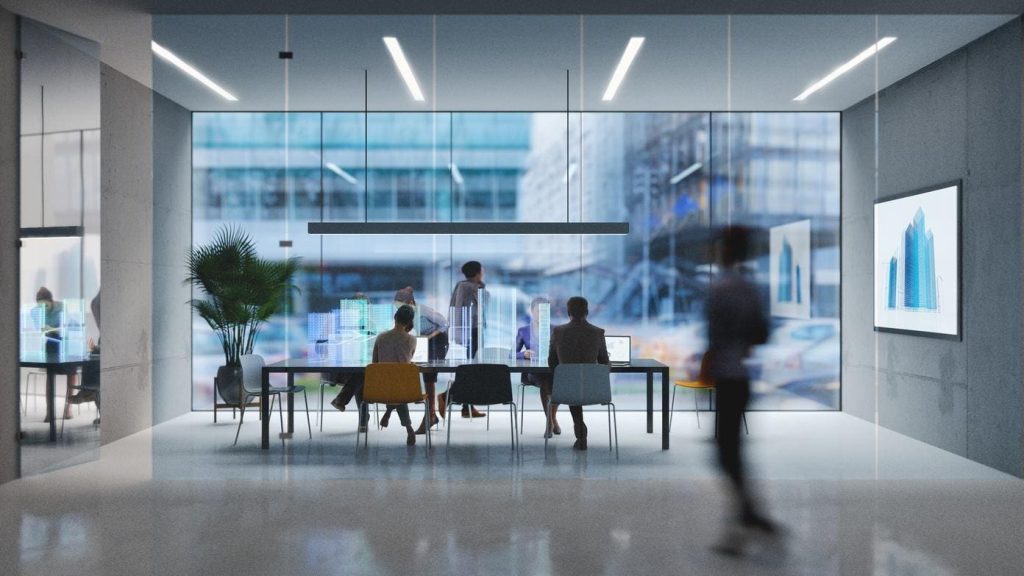Nick Romito, CEO of VTS.
While we share a collective sense of relief and embrace the long-awaited declaration of Covid-19 as no longer a public health emergency, its effects have cemented within our world and forever changed how we operate.
Catapulting our environment into the hybrid work model, the industry has transformed in record time and the definition of “corporate America” has even rebranded itself. Organizations are now more prone to foster an environment of collaboration, employee well-being and innovation—creating a blend of flexibility and efficiency.
The lineup of hybrid work models is limitless. From five days in the office to five hours two times a week, what constitutes working in the office looks different across the board. A one-size-fits-all approach is not only unfeasible but discouraged. We’re currently experiencing a technological revolution for the history books, and as a part of this, I believe that landlords’ tech stacks need to match tenant expectations.
With competition stiffer than ever to successfully market, attract and retain tenants across the nation’s commercial office spaces, how can landlords ensure that the employees of companies returning to the office are satisfied, engaged and productive tenants for years to come?
The Workplace Of The Future
Now more than ever, the sentiment “innovate or die” is crucial not only to the success of an organization, but its survival. By the year 2025, it’s projected that Gen Z, those born between 1997 and 2012, will constitute approximately 27% of the global workforce. I’ve found that this generation’s expectations drastically differ from those of the generations prior. According to data from multiple Adobe surveys (downloaded required), seven in 10 Gen Z employees would switch jobs for better tech.
With tech being so integral, what are tenants looking for when it comes to ways to enhance their on-site experience? JP Morgan’s “2023 Midyear Commercial Real Estate Outlook” specifically highlights the importance of digital management software. We’ve seen recently launched digital software that helps centralize all tools in the tech stack and create better experiences and facilitate tenant-talent relationships—proving JP Morgan’s findings to be undeniably evident.
I believe that landlords can leverage this type of technology to scale winning operational strategies. While the pandemic has undoubtedly shifted the workplace model, it has also set a precedent for the next generation of the workforce: Gen Z.
For most in this newer generation, all they have known in the working world is a hybrid model approach. They’ve embraced this change by navigating an evolving work and office space environment with increasing openness. Therefore, to stay competitive, I believe companies must continue to prioritize flexible technological advancements that can reach far beyond the office perimeter. Yet, despite this need, according to the latest independent study by my company, the fourth annual 2023 Global Landlord Report, 62% of landlords lack the resources needed to fully grasp how tenants are currently using their assets.
The utilization of cutting-edge technology can help empower you to capture tenant health and equip your teams with the insights needed to create impactful leasing, marketing and operational strategies. Simply put, if landlords expect younger members of the workforce to actually come into the office, they need to have the tech in place to entice them to do so.
People Over Place
What does modern corporate America look like today? I believe the pandemic gave the industry the nudge it needed to put people before place—because when you invest in the people, the benefits can ripple throughout the entire company. After having the comfort of working from home for years, why should people want to return to the office?
I’ve seen the internal narrative with landlords and executive leaders shift from “making them return to the office” to “making the office be a place where they want to return to.” According to the earlier mentioned research by my company, almost all (91%) landlords claim that they want to provide tenants with an environment akin to hospitality-like experiences.
Does remote work contribute to the loneliness epidemic? According to a pre-pandemic study by organizational psychologist Lynn Holdsworth, full-time remote work was found to increase loneliness by 67% when compared to in-office work. I believe that by creating a social environment that people look forward to coming to, companies can balance the desire for the benefits of remote work while ensuring an eager and excited workforce—helping guarantee that landlords find and keep tenants.
Connecting People
For some examples of successful ways that clients of mine have enticed people into the office, you can invite tenants to building-wide initiatives such as wine tastings, Cinco de Mayo treats, Girl Scout cookies, morning bagels and, yes, even massages. These opportunities provide employees and tenants alike the chance to network outside of their organizations and foster a community of belonging—providing a positive vision of their workplace and giving them events to look forward to. Each event can be promoted via various apps, email blasts and screens in the elevators.
By enabling landlords to offer these kinds of experiences, they can connect tenants across a building or even a portfolio. While working conditions continue to change, I recommend having your operations and technology as centralized as possible in order to provide a better experience and the ability to coordinate, thus increasing the likelihood of lease renewal.
Valued employees are happy employees, and flexible workplaces boost employee retention—it’s as simple as that. The power of technology lies in its ability to unite us rather than divide us, fostering connections, facilitating communication and simplifying the office experience.
Forbes Business Council is the foremost growth and networking organization for business owners and leaders. Do I qualify?
Read the full article here










